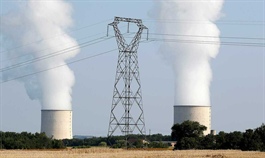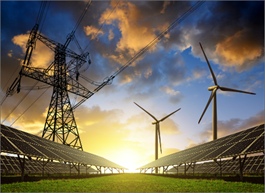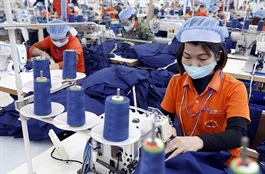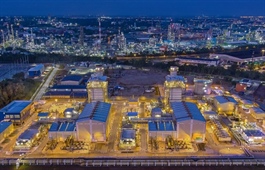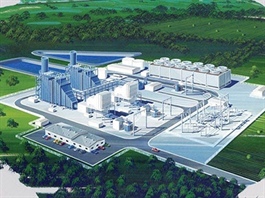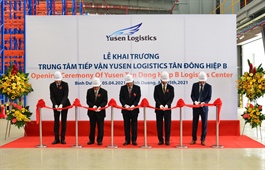High hopes for PDP8 reform of energy mix
High hopes for PDP8 reform of energy mix
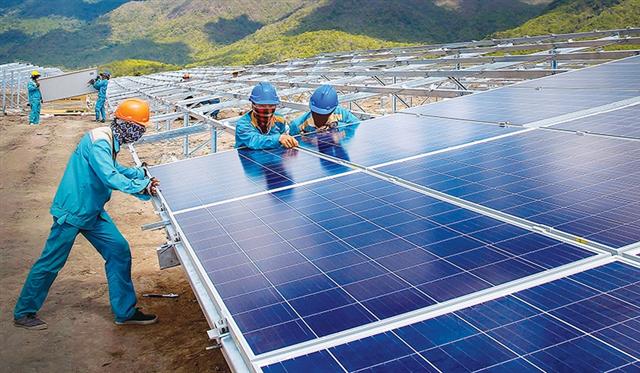
Solar power development in Vietnam has already exceeded the goals of the current PDP8. Photo: Le Toan
|
Do Thang Hai, Deputy Minister of Industry and Trade, said that the latest draft of the plan (PDP8), which has received unanimity from the appraisal council, is “expected to be approved and issued by the prime minister right in this term by the new government.”
The PDP8 offers three groups of mechanisms and 11 solutions based on lessons learned from the previous plans to ensure feasibility in the implementation. The openness and flexibility of the PDP8, Hai said, represent the novel approach in this schedule.
The electricity development plan meets the criteria set out in Resolution No.55-NQ/TW from last year that outlines the National Energy Development Strategy of Vietnam towards 2030, with a vision to 2045.
Hai explained that the power mix will be diversified, giving high priority to the development of renewable energy with a more reasonable structure and distribution between each region. At the same time, the environmental impact of power development has been a big concern following Vietnam’s international commitments against climate change hazards.
The PDP8 sets out the total capacity planned for additional development and spatial distribution by region and locality but does not name specific projects in the new and renewable energy segments. After the plan is approved, the selection of investors will have to comply with the provisions of the Law on Investment and the Law on Bidding, ensuring openness and transparency.
One fact that was not mentioned by the Ministry of Industry and Trade in the final draft before submission was that the total capacity for renewable energy by 2045 is set at 121GW. However, by January the total installed capacity – including proposed additions – has already reached 180GW, far exceeding the 2045 target.
Vietnam is a country with huge renewable energy potential. La Hong Ky of the National Steering Committee for Electricity Development noticed that there was an “overstatement for the development of wind and solar power in Vietnam”. This, inadvertently hindered the normal development of other power sources, leading to potential energy shortages.
Although the general roadmap follows a one-step-ahead principle, meaning that there should always be enough electricity to meet the demand for socioeconomic development requirements and people’s daily life, looking at the reality of the current power system, it may be necessary to consider the most reasonable cost for the economy.
By the end of 2019, the total installed capacity of the national power system reached about 56,000MW. By the end of 2020, this amounted to approximately 70,000MW.
Compared to that, the system load in the 2019-2020 period was less than 40,000MW, so there was a huge amount of excess power.
The investment costs of power sources are fully included in the cost of electricity production, while power plants do not fully operate under truly competitive market mechanisms, trading electricity at fixed prices or rates under long-term contracts. Thus, an excess of power at such a large level could be a great waste of investment.
Statistics of the National Load Dispatch Centre show that in the last two months of 2020 and from the beginning of 2021 when electricity consumption on weekdays peaked, it only amounted to around 30,000MW.
Given the total installed capacity of 66,000MW, many power plants, including solar power and other sources, will have to limit generation.
The slower grid investment could also create difficulties for new sources of electricity. Statistics show that, in general, transmission network projects are 1-2 years behind schedule, sometimes even 4-5 years, making it difficult to operate the system.
The more efficient a power system is, the more costs for electricity generation are optimised, and the burden does not fall on the end consumers.
Many countries have agreed on the structural transformation of energy usage to mitigate climate change and develop sustainably. This transition is done depending on the energy sources and financial capacity of each country. Vietnam is a developing country whose the energy demand is increasing rapidly, and Ky said, “There should be research and integrated plans for the structural transformation of an energy mix that is suitable and effective for the country.”
The imbalance between investments in power sources and the national grid caused Vietnam’s grid to stay at a low level compared to other countries.
Dr. Bui Huy Phung from the Vietnam Institute of Energy Science found that, in the 1980s and 1990s, Vietnam’s electricity grid investment rate was about 20 per cent of total related investment. Between 2005 and 2009, this rate was about 36 per cent. However, in the previous draft PDP8, the rate was lower at around 34 per cent, while the global average stands at about 45-50 per cent.
|
David Lewis - CEO, Energy Capital Vietnam The highly-anticipated PDP8 could be the most significant indication of the country’s move towards grid stabilisation and renewable energy. In April last year, the Ministry of Industry and Trade (MoIT) proposed a target of 11.6GW of wind (onshore and offshore) by 2025. By itself, Vietnam’s offshore wind potential nearly makes up that amount. According to the Renewables Consulting Groups’ Global Renewable Infrastructure Projects database, the near-term forecast predicts approximately 7GW of installed offshore wind/inter-tidal capacity by 2030. The plan is eagerly anticipated in Vietnam’s booming renewable energy sector and the Vietnamese government has been open to overseas engagement in the sector, particularly for offshore wind. Liming Qiao - Head, GWEC Asia In order to scale-up Vietnam’s offshore wind sector, strong policy signals providing a long-term vision for the industry is absolutely crucial. Volume and stability is key to attracting the international offshore wind industry to invest in projects, manufacturing and supply chain development. Not only will this reduce costs for offshore wind in Vietnam, but it will position the country as a key offshore wind hub in Southeast Asia. To establish investor confidence, a sufficiently ambitious and forward-looking offshore wind target is essential for Vietnam. The GWEC recommends a continuous 10GW buildout by 2030, 25GW by 2035, and 40GW by 2040, at which point offshore wind could supply 17 per cent of Vietnam’s electricity. This long-term vision coupled with a strong regulatory framework that provides a clear process for consenting, site development, and leasing will be essential to effectively scale-up offshore wind in Vietnam. Ngo Nhien - Executive director, VIETSE The MoIT’s full draft of the PDP8 has received a lot of public attention. According to the draft, there will be new elements at state management level and a governance structure to implement it, such as the Department of Bidding for Power Projects and the role of a national steering committee for power development for monitoring and evaluating bidding performance of power ventures. Regarding the investment mechanism, highlights are calling for private investment in transmission from source to the grid, and synchronising the power source into the grid. In addition, the financing mechanism also sees some differences, including emergence of new solutions such as direct power purchase agreements, renewable power ratio standards, price cuts in generating renewables capacity, encouraging investment in energy storage solutions, supporting service mechanisms for the power sector, and an inter-regional transmission funding mechanism with other countries. |



